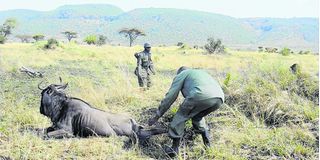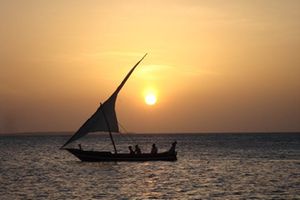For the love of Tanzania and Serengeti National Park

The human instinct to travel starts very early in life. After a child is born, for loving parents, one of the most exciting wait is the baby’s first step. And when the child learns to walk, the desire to travel is unveiled.
Children always want to go out and explore. They want to know where their parents and adults go every day as they leave them at home most of the times. Thus, the human desire to travel, to known is born. “I cannot rest from travel” so wrote renowned British poet, Alfred Tennyson, in his poem “Ulysses.” Even though some of us never travel the world over, can we really rest from travel?
Those who study travel psychology, indicate that travel is a basic human desire. And out of this one of the greatest and a very significant sector in the world was born- tourism/ travel sector was born.
According to the World Travel and Tourism Council, in 2019, travel and tourism’s contributed US$8.9 trillion to the world’s GDP that is about 10.3% of global GDP, 330 million jobs and 1 in 10 jobs. Add that to tourism multiplier effect to the other sectors.
In Tanzania, over the years, tourism earnings as a share of GDP have been on the rise. A report by Kweka, Morrissey and Blake (2003) titled ‘The Economic Potential of Tourism in Tanzania’ indicates that the share was one percent in 1986–92, but in 1993-98 has been over six percent.
Before Tanzania unveiled the current tourism mantra, “Tanzania Unforgettable,” we used to have “Tanzania, the Land of Kilimanjaro, Zanzibar, and the Serengeti!” Both catchphrases are great and poetic. Mount Kilimanjaro, known as the roof of Africa for being the continent’s highest peak, Zanzibar Archipelago renown as the spice island, and the Serengeti park, most known for the annual migration of over 1.5 million wildebeest, have always been iconic footprints of destination Tanzania.
Over the years the majority of tourists concentrated on visiting the 3 destinations. They have given the country a huge name in the global tourism industry but Tanzania Tourist Board and stakeholders wanted a new catchphrase that would market the whole of the country tourism (all regions), thus the adoption of the new mantra.
In every part of our great motherland, there is always something that can be used as a tourism attraction. No wonder many safari tour companies describe Tanzania as an authentic African Safari paradise. The potential for tourism growth is immense. Tanzania has the top three ‘Natural Wonders of Africa’, The Serengeti National Park, Mount Kilimanjaro and the Ngorongoro Crater.
For the second year (2019 and 2020), Serengeti National Park has been recognised as Africa’s leading national park by World Travel Awards. This is a huge achievement coupled with the fact that even Forbes’ Bucket List Travel: The Top 21 Destinations for 2021, the park is number 2 globally, and so far listed as the world’s second most booked destination at 2021 eve. What does all this portend for Tanzania? Can we fight to be the number one destination in Africa in terms of the number of tourists and tourism earnings? This should be our outlook with the Tanzania Unforgettable mantra.
There is a need to increase our nation’s tourism earnings multiple times. That is possible if all great attractions in almost every part of the dear motherland, that nature has bestowed us, were to realize their higher tourism potential. Take the case of Saadani National Park, so near Dar es Salaam, and where the beach marries the bush and animals. It’s a highly unique park in East Africa, the only one that borders the Indian Ocean! This can be promoted to the levels of Serengeti… and it will be great for dear motherland.
________________________________________________________________
Saumu Jumanne is an Assistant Lecturer, Dar es Salaam University College of Education (DUCE)




